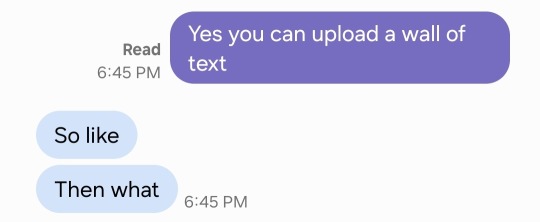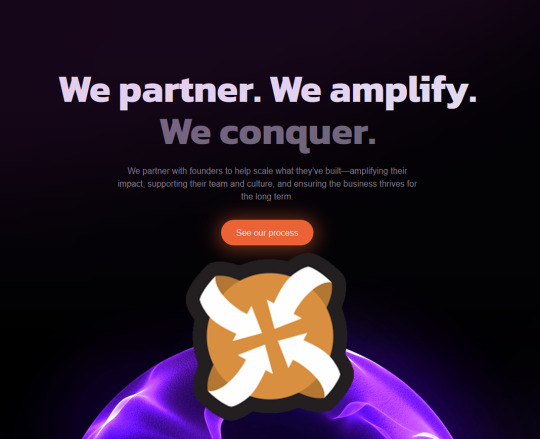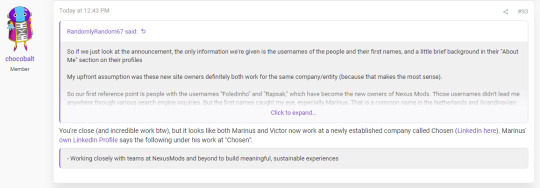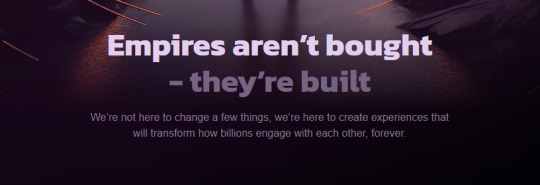"Which is the greater tragedy - that she fell in battle or that she fell in line?" Lyra or Faceless | 24 | League of Legends (Lore) Trash | Constantly in the Animation Hell | Sometimes fanfiction writer as well | I will go insane about Prog regulary // Credits - Theme: evilqueenedthemes.tumblr.com/ | Avatar: Legends of Runeterra / Kudos Production | Sidebar: aurelinsol.tumblr.com/ | Banner: ganjangom.tumblr.com | Right Pic 1: ironstylus.tumblr.com | Right Pic 2: no-crowns-for-kings.tumblr.com | Right Pic 3: nfouque.deviantart.com/ | Background: League of Legends
Last active 60 minutes ago
Don't wanna be here? Send us removal request.
Text
Funniest detail in the new Deltarune chapters is that if you try to play Megalovania on one of the pianos Toby Fox's sona runs you over with a Little Tikes car and when you wake up you can't play it anymore
31K notes
·
View notes
Text
if you're writing and find yourself thinking 'this is too weird/gross/offputting/esoteric/ambitious/catered to my specific interests + sure to push away a broader audience' that is the devil speaking and it is a lie. you are already firmly on the right path and you need to double down
16K notes
·
View notes
Text











No transphobes allowed, only transborbs.
Check out my stuff!
✧Read Namesake✧ ✧Read Crow Time✧ ✧Store✧ ✧Patreon✧
83K notes
·
View notes
Video
THIS IS THE BEST THING I HAVE EVER SEEN
3M notes
·
View notes
Text


177 notes
·
View notes
Text





The spouse is getting curious about tumblr
120K notes
·
View notes
Text
Ah these children who always create problems for poor mothers....
43K notes
·
View notes
Text

there's a lot to shit on kojima for but I gotta respect that
19K notes
·
View notes
Text
Magic.

532 notes
·
View notes
Text

Nokia 3310/3330
10K notes
·
View notes
Text
Nexus Mods was acquired by Chosen, a company focused on growth and monetization of gaming startups.
Reddit thread

Dark0ne, creator and ex-owner of Nexus Mods, stepped down today in an update post:

NexusMods post
Users on Resetera were able to found out more about this sudden change of ownership:

Resetera thread

Victor Folmann, CEO of Chosen, published this "Gaming Startup Monetization Cheat Sheet" on his LinkedIn

Link to the post
Users are already sharing their fear of NexusMods allowing more bigoted mods in the future, and taking down inclusive ones to follow the current "anti-woke" trend in the gaming industry


Reseta threada bout their change in moderation concerning bigoted mods following Oblivion Remastered launch
Another User, this time on NexusMods forum, noticed queer and inclusive mods being removed following Dark0ne's post

Link to the forum post
It is also worth mentioning that Chosen and its CEO are seen using AI generated images on their website (including generated images depicting Tracer from Overwatch) hyping up ChatGPT on his Linkedin account, and are including "rewarding gamers with crypto money"

Users speculate that Chosen buying out NexusMods is to potentially train an AI model that generates mods

More about Nvidia's AI "RTX Remix" and future projects
7K notes
·
View notes
Text
if you ever need me, just remember im only 6 messages, 8 dms and 12 missed calls away
24K notes
·
View notes
Text
I think "no hatewatching" is a good policy to have, but less because you have to deprive Big Media Corp of your $15 or whatever for a movie ticket, which makes very little difference to them, and more because you should not, for your own spiritual health, waste your time on movies that you know are bad and/or you will not enjoy.
Surround yourself with what is true and good and beautiful. Avert your eyes from what is cheap and soulless and ugly.
#if you watch something bad with your friends to make fun of it#that is a good thing#watching something that is bad for no good reason does nothing good#so watch something that you may enjoy instead something you will hate
6K notes
·
View notes
Text
ok time to lock the fuck in *opens discord* ok time to lock the fuck in *opens tumblr* ok time to lock the fuck in *opens gmail* ok time to lock the fuck in *opens youtube* ok time to lock the fuck in *opens an unstable vortex in time and space* ok time to lock the fuck in *opens ao3* ok time to lock the fuck in *opens discord* ok time to lock the fuck in *opens tumblr*
69K notes
·
View notes
